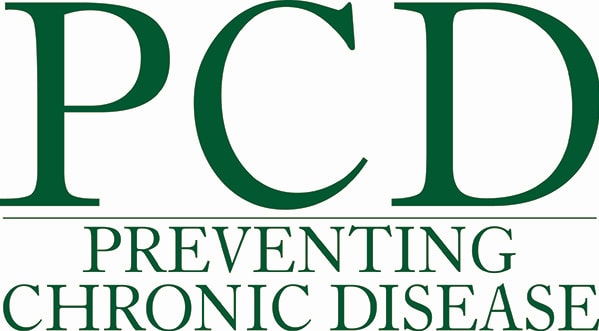| Author and year |
Population, total n; outcomes, n (age) |
Study design |
Type of statistical analysis |
Model identification |
Variables included |
Accuracy predictor |
| Healthy adults |
| Al-Shamsi et al (10), 2019 |
622; 71 (52.4 y) |
Retrospective cohort |
Fine and gray regression |
Full model |
Age, sex, diabetes mellitus, hypertension, dyslipidemia, smoking, cardiovascular disease, systolic blood pressure, diastolic blood pressure, total cholesterol, triglycerides, HbA1c, eGFR |
AUC |
| Stepwise model |
eGFR, diabetes, cholesterol, HbA1c |
| Chien et al (11), 2010 |
5,168; 190 (51.2 y) |
Prospective cohort |
Cox proportional hazards regression |
Clinical model |
Age, BMI, diastolic blood pressure (mm Hg), history of type 2 diabetes, history of stroke |
C statistic, sensitivity, specificity |
| Biochemical model |
Age, diastolic blood pressure, history of stroke, uric acid, postprandial glucose, HbA1c, urine protein ≥100 mg/dL |
| Hao et al (12), 2017 |
1,310,363; 7,448 (NR) |
Retrospective cohort |
Multivariable logistic regression |
Model derivationa |
146 clinical variables including demographics, diagnosis of type 2 diabetes, medications, laboratory test results, and resource utilization |
C statistic, sensitivity, specificity |
| 1,430,772; 8,299 (NR) |
Model validation |
| Hippisley-Cox and Coupland (13), 2010 |
1,591,884; 23,786 (35–74 y) |
Prospective cohort |
Cox proportional hazards regression |
Final model |
Age, ethnicity, deprivation, smoking, BMI, systolic blood pressure, type 2 diabetes, rheumatoid arthritis, cardiovascular disease, treated hypertension, congestive cardiac failure; peripheral vascular disease, NSAID use, family history of kidney disease, systemic lupus erythematosus (in women), and kidney stones (in women) |
AUC |
| Halbesma et al (14), 2011 |
6,809; 272 (28–75 y) |
Prospective cohort |
Multivariable logistic regression |
Final model |
Age, urinary albumin excretion, systolic blood pressure, C-reactive protein, known hypertension |
AUC |
| Kwon et al (15), 2012 |
2,921; NR (≥19 y) |
Cross-sectional |
Multivariable logistic regression |
NR |
Age, sex, anemia, hypertension, diabetes, cardiovascular disease, and proteinuria |
AUC, sensitivity, specificity |
| External validation 8,166; NR (≥30 y) |
Age, sex, anemia, hypertension, diabetes, cardiovascular disease, and proteinuria |
| Lee et al (16), 2019 |
9,080; 734 (51.8 y) |
Prospective cohort |
Cox proportional hazards regression |
Model 1 |
Sex, BMI, education level, income, fasting plasma glucose, serum albumin |
AUC, C statistic |
| Model 2 |
Sex, BMI, education level, income, fasting plasma glucose, serum albumin, Framingham risk score |
| Model 3 |
Sex, BMI, education level, income, fasting plasma glucose, serum albumin, eGFR, proteinuria |
| Model 4 |
Sex, BMI, education level, income, fasting glucose, serum albumin, eGFR, proteinuria, Framingham risk score |
| Nelson et al (29), 2019 |
5,222,711; 974,502 (NR) |
Cross-sectional |
Multivariable logistic regression |
Primary model |
Age, sex, race, ethnicity, eGFR, history of cardiovascular disease, ever smoker, hypertension, BMI, albuminuria |
C statistic |
| O'Seaghdha et al (17), 2012 |
2,490; 229 (45–64 y) |
Prospective cohort |
Multivariable logistic regression |
Model 1: clinical model |
Age, type 2 diabetes, hypertension |
C statistic |
| Model 2: clinical model and baseline eGFR |
Age, diabetes mellitus, hypertension, baseline eGFR |
| Model 3: model 2 plus measure of proteinuria |
Age, diabetes mellitus, hypertension, baseline eGFR, quantitative albuminuria (urine ACR or dipstick proteinuria) |
| Saranburut et al (18), 2017 |
3,186; 271 (25–54 y) |
Prospective cohort |
Multivariable logistic regression |
Model 1 (clinical)a |
Age, sex, history of diabetes, systolic blood pressure, waist circumference |
AUC |
| Model 1aa |
Substitution of waist circumference with overweight (BMI ≥25) |
| Model 1ba |
Substitution of hypertension for systolic blood pressure |
| Model 2 (clinical plus limited laboratory tests)a |
Age, sex, systolic blood pressure, diabetic mellitus, GFR category |
| Model 2aa |
Substitution of systolic blood pressure with hypertension |
| Model 3 (clinical plus full laboratory tests)a |
Age, sex, systolic blood pressure, diabetic mellitus, GFR, uric acid, hemoglobin |
| Model 3aa |
Substitution of hypertension for systolic blood pressure |
| Model 1 (clinical) |
Age, sex, history of diabetes, systolic blood pressure, waist circumference or BMI |
| Model 2 (clinical plus limited laboratory tests) |
Age, sex, systolic blood pressure, diabetic mellitus, GFR category |
| External validation 1,395 (35–54 y) |
Model 1 (clinical) |
Age, sex, history of diabetes, systolic blood pressure, waist circumference |
| Model 2 (clinical plus limited laboratory tests) |
Age, sex, systolic blood pressure, diabetic mellitus, GFR category |
| Thakkinstian et al (19), 2011 |
3,459; 626 (≥18 y) |
Cross-sectional |
Multivariable logistic regression |
Model 1 |
Age, diabetes, hypertension, history of kidney stones |
C statistic |
| Umesawa et al (20), 2018 |
58,855; 7,500 (40–74 y) |
Prospective cohort |
Multivariable logistic regression |
Simple risk prediction |
Age, eGFR, proteinuria, hematuria |
C statistic |
| Full risk prediction |
Age, eGFR, proteinuria, hematuria, BMI, systolic blood pressure, medication for hypertension, glucose tolerance, medication for diabetes mellitus, smoking and alcohol intake |
| External validation 76,152; 8,964 (40–74 y) |
Simple risk prediction |
Age, eGFR, proteinuria, and hematuria |
| Full risk prediction |
Age, eGFR, proteinuria, hematuria, BMI, systolic blood pressure, medication for hypertension, glucose tolerance, medication for diabetes mellitus, smoking and alcohol intake |
| Wen et al (21), 2020 |
3,266; 590 (NR) |
Prospective cohort |
Multivariable logistic regression |
Training: simple clinical modela |
Sex, waist circumference, systolic blood pressure, diabetes mellitus, education |
AUC, sensitivity, specificity |
| Best fit modela |
Sex, systolic blood pressure, diabetes mellitus, education, triglyceride, urine ACR, C-reactive protein |
| Validation: simple clinical model |
Sex, waist circumference, systolic blood pressure, diabetes mellitus, education |
| Best fit model |
Sex, systolic blood pressure, diabetes, education, triglyceride, urine ACR, C-reactive protein |
| Yu et al (22), 2021 |
10,049 total; male: 4,117; 157 (NR) |
Prospective cohort |
Cox proportional hazards regression |
Sex-specific CKD male model |
eGFR, HbA1c standard deviation, uric acid, uric acid standard deviation, blood urea nitrogen, albumin, hemoglobin |
AUC |
| 10,049 total; female: 5,932; 270 (NR) |
Sex-specific CKD female model |
Age, eGFR, triglycerides, HbA1c standard deviation, uric acid, uric acid standard deviation, blood urea nitrogen, albumin, hemoglobin, age at menarche (if ≥17 years) |
| Adults with type 2 diabetes |
| Blech et al (23), 2011 |
1,274; 556 (62.6 y) |
Cross-sectional |
Multivariable logistic regression |
Score 1 |
Age, duration of diabetes, diabetes type, sex, ethnicity |
C statistic, sensitivity, specificity |
| Score 2 |
5 single-nucleotide polymorphisms in 5 genes (HSPG2, NOS3, ADIPOR2, AGER, CCL5), age, duration of diabetes, diabetes type, sex, ethnicity |
| Dunkler et al (24), 2015 |
6,766; 1,079 (≥55 y) |
Prospective cohort |
Multivariable logistic regression |
Laboratory model |
Urine ACR, eGFR, albuminuria stage (normo- or microalbuminuria), sex, age |
C statistic, sensitivity, specificity |
| External validation 8,300 (≥55 y) |
Clinical model |
Delta–urine albumin-creatinine ratio to progression, eGFR, albuminuria stage, sex, age, race (White, Asian, other), diabetes duration (years, log transformed), fasting LDL (mg/dL), glucose (mg/dl), waist circumference (cm), comorbidities major atherosclerotic cardiac events (myocardial infarction, stable or unstable angina, coronary artery bypass grafting, or percutaneous interventions, including angioplasty, stenting, atherectomy), laser therapy for diabetic retinopathy, peripheral artery disease (peripheral arterial angioplasty, limb or foot amputation), stroke or transient ischemic attack, number of antihypertensive drugs prescribed |
| Jardine et al (25), 2012 |
7,377; 2,715 (NR) |
Prospective cohort |
Cox proportional hazards regression |
eGFR ACR model |
eGFR, ACR |
C statistic |
| Final risk prediction model |
Ethnicity, eGFR, ACR, systolic blood pressure, hypertension treatment, HbA1c level, diabetic retinopathy, waist circumference |
| External validation 11,140 (NR) |
eGFR, urinary ACR, systolic blood pressure, HbA1c level, diabetic retinopathy, blood pressure–lowering treatment at baseline, Asian ethnicity, waist circumference |
| Low et al (26), 2017 |
1,582; 679 (NR) |
Prospective cohort |
Multivariable logistic regression |
Training data seta |
Log urinary ACR (mg/g), systolic blood pressure (per 10 mm Hg), HbA1c, eGFR, (per 5 ml/min/1.73m2), LDL cholesterol (mmol/L), age (per 10 years increase) |
AUC, sensitivity, specificity |
| Test data set |
Log urinary ACR, systolic blood pressure, HbA1c, eGFR, LDL cholesterol, age (per 10 years increase) |
| Nelson et al (29), 2019 |
5,222,711; 974,502 (NR) |
Cross-sectional |
Multivariable logistic regression |
Diabetic model |
Age, sex, race, ethnicity, eGFR, history of cardiovascular disease, ever smoker, hypertension, BMI, albuminuria, diabetes medications (insulin vs only oral medications vs none), HbA1c values, and the interaction between diabetes medications and HbA1c values |
C statistic |
| External validation |
2,253,540; 367,159 (NR) |
|
|
External validation model |
|
| Raña-Custodio et al (unpublished data)b |
18,148; 1,617 (60.5 y) |
Prospective cohort |
Multivariable logistic regression |
Office equation |
Sex, age, BMI, current tobacco smoking and alcohol intake, evolution of diabetes mellitus, current diabetes mellitus treatment scheme (insulin, oral hypoglycemics, or both), prevalent microvascular complication of type 2 diabetes (retinopathy, diabetic foot, neuropathy, or stroke), square of age and female current smoker |
C statistic |
| Laboratory risk score |
Sex, age, BMI, current tobacco smoking and alcohol intake, family history of CKD (defined as any prevalent history of CKD among any first-degree relative), history of hypertension, evolution of diabetes mellitus, current diabetes mellitus treatment scheme (insulin, oral hypoglycemics, or both), microvascular complication of type 2 diabetes (retinopathy, diabetic foot, neuropathy, or stroke), fasting plasma glucose, HbA1c, serum creatinine (isotope dilution mass spectrometry), eGFR (Chronic Kidney Disease Epidemiology Collaboration equation), total cholesterol, triglyceride levels |
| Wu et al (27), 2017 |
4,795; 643 (59.3 y) |
Prospective cohort |
Multivariable logistic regression |
Development model |
Sex, BMI, systolic blood pressure, duration of diabetes (years) |
AUC |
| Wysham et al (28), 2020 |
160,031; 9,973 (NR) |
Retrospective cohort |
Multivariable logistic regression |
DKD |
Age, sex, geographic region, insurance type, payer type, adapted diabetes complications severity index, a recorded diagnosis of hypertension, a recorded diagnosis of heart failure, anemia, diabetic nephropathy, CKD stage 1 and 2, time interval with diabetes mellitus |
C statistic |









